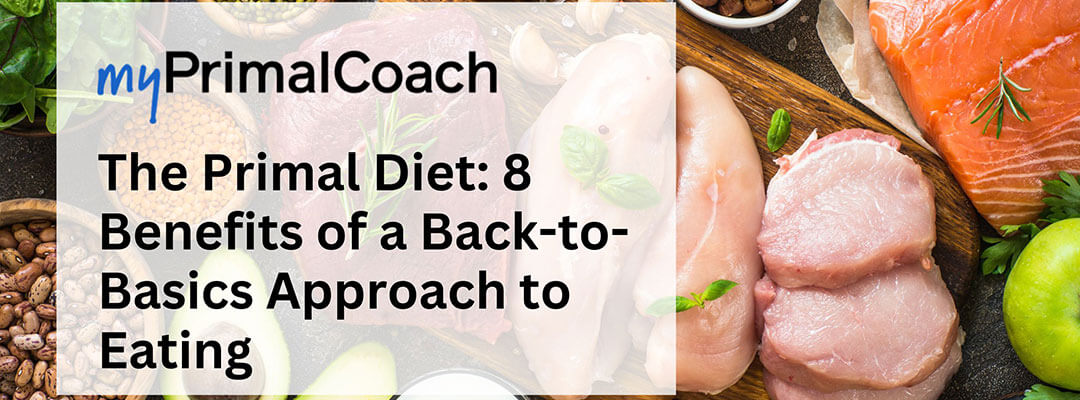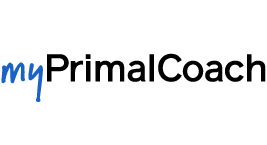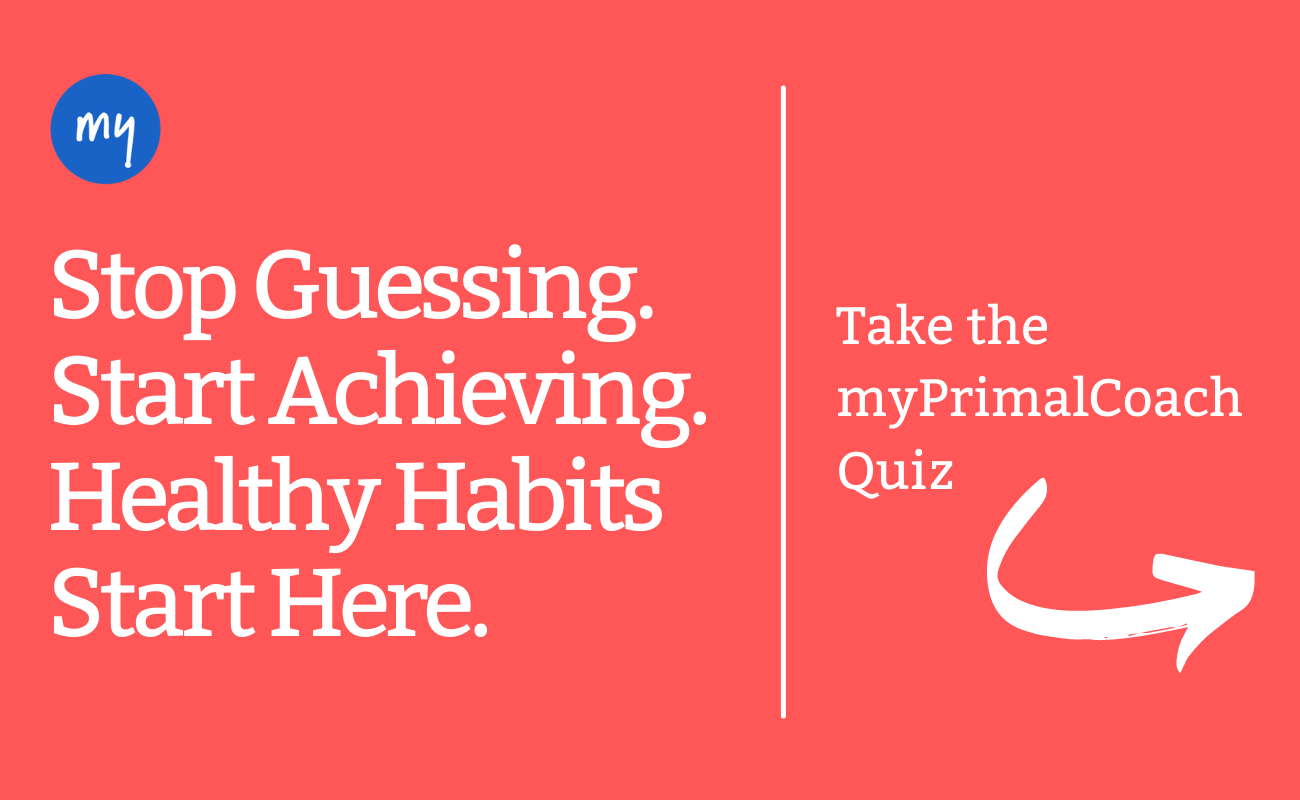With so much conflicting nutritional advice swirling around, and the Standard American Diet contributing to a host of health problems, many are seeking a simpler, more natural approach to eating.

The Primal diet focuses on eating locally-sourced produce, while avoiding processed foods.
The Primal diet, also known as the slightly more flexible cousin to the Paleo diet, offers an attractive alternative by looking toward the eating habits and lifestyle guidelines of our ancestors.
The back-to-basics approach to eating emphasizes whole, natural foods that mirror what humans ate for thousands of years before the advent of agriculture and modern food processing.
But is the Primal diet just another fleeting trend, or does it offer a genuine path to better health?
Let's dive into the core principles of the Primal diet, explore its potential benefits, and examine how it differs from other popular dietary approaches.
What Is the Primal Diet?
The Primal diet is a modern approach to nutrition with roots that are anything but modern. The core principle is to mimic the diet of our Paleolithic ancestors. It emphasizes whole, unprocessed foods like meats, fish, vegetables, fruits, nuts, and seeds. It excludes grains, legumes, dairy (in most variations), and processed foods. The main idea is that our bodies are genetically adapted to these ancestral foods. Proponents of the Primal diet believe that modern diets high in processed foods are the root cause of various health problems we see today. Simply put, the Primal diet is all about eating real food and avoiding packaged foods.
Mark Sisson is a key figure and often recognized as the father of the Primal diet movement. He popularized the approach through his book, The Primal Blueprint, where he outlined the ten Primal Blueprint Laws. These laws emphasize whole, unprocessed foods and a lifestyle aligned with our evolutionary past. His followers often cite The Primal Blueprint as the pinnacle resource in their journey to adopt and maintain this way of eating.
What to Eat on the Primal Diet
The Primal diet is rich in nutrient-dense foods. Here's a breakdown of what to include:
- Meats: Meats are a cornerstone of the Primal diet. Opt for grass-fed, pastured, or wild game. Examples include beef, bison, lamb, venison, pork chops, pasture-raised chickens and eggs, turkey, and duck. Bone broth and bone marrow are also included. Think of what our ancestors hunted.
- Fish and Seafood: Excellent sources of protein and healthy fats. Choose wild-caught varieties whenever possible. Examples include salmon, tuna, cod, mackerel, shrimp, crab, and lobster.
- Vegetables: A wide variety of non-starchy vegetables should be included. Focus on organic produce such as leafy greens, cruciferous vegetables, and colorful veggies. Examples include spinach, kale, broccoli, cauliflower, Brussels sprouts, asparagus, peppers, onions, and carrots. Starchier vegetables like sweet potatoes are best in moderation. Corn is considered a grain.
- Fruits: A natural source of vitamins, and antioxidants. Seasonal fruit is best. Be mindful of sugar content, especially if you're watching carbohydrate intake. Examples include berries, apples, oranges, peaches, and avocados.
- Nuts and Seeds: Great sources of healthy fats and fiber. Examples include almonds, walnuts, macadamia nuts, pecans, pumpkin seeds, and sunflower seeds.
- Healthy Fats: Include healthy fats from sources such as avocados, olive oil, and coconut oil. Healthy fats are essential for overall health.
- Milk Alternatives: Unsweetened almond, coconut, cashew, hemp, and flax milks are acceptable alternatives to dairy.
- Occasional Treats: Dark chocolate with a low sugar percentage, and natural sugars like maple syrup and raw honey can be enjoyed in moderation.
Dairy on the Primal Diet
Dairy is accepted in some forms on the Primal diet, as along as it doesn't cause any digestive issues. Examples of Primal-friendly dairy options include:
- Raw, Full-Fat Dairy: Raw, unpasteurized, and full-fat dairy is probably closer to what our ancestors might have consumed.
- Fermented Dairy: Fermentation reduces lactose content and can make dairy easier to digest for some people. Examples include Greek yogurt, kefir, and certain cheeses like Farmer's and cottage.
- High-Fat Dairy: The Primal diet often favors full-fat dairy over low-fat or non-fat options, as it's considered less processed and more natural.
Foods to Avoid on the Primal Diet
The following foods are generally avoided on the Primal diet:
- Grains: All types, even whole grains, including wheat, rice, corn, barley, rye, oats, and anything made from them (bread, pasta, cereal, etc.).
- Legumes: Beans, lentils, peas, and peanuts (which are technically legumes, not nuts).
- Processed Foods: All highly processed foods.
- Sugars: Artificial sweeteners, refined sugars, and high fructose corn syrup.
- Unhealthy Fats: Trans fats, hydrogenated oils, and many vegetable oils like soybean, canola, corn, sunflower, and safflower oil.
- Other: Soy sauce and soy products.
The Primal Diet Compared to Other Popular Diets
The Primal Diet isn't the only whole foods diet out there. Let’s explore how the Primal diet compares to the Paleo, Keto, and Mediterranean diets, highlighting their shared principles and crucial differences:
Primal Diet vs. Paleo Diet
The Paleolithic and Primal diets are often used interchangeably as low-carb diets. They do share very similar core values. Both diets are based on the idea that humans are genetically adapted to the foods our Paleolithic ancestors ate. The two diets emphasize eating foods that are as close to their natural state as possible. They both stress avoiding processed foods, refined vegetable oils and sugars, and artificial ingredients. The core foods of both eating plans generally include meats, fish, vegetables, fruits, nuts, and seeds.
However, they do have some slight differences. The Primal diet is slightly more flexible than the Paleo diet. It is less restrictive and allows for more types of foods, including certain forms of dairy, particularly raw dairy, fermented, or full-fat dairy products as listed above. It is also more accepting of saturated fat from healthy sources, such as fattier cuts of meat.
The Paleo diet tends to focus on consuming foods that were available during the Paleolithic era. Whereas the Primal diet’s emphasis lies in emulating the biology of our hunter-gatherer ancestors. The Primal diet incorporates more lifestyle factors, such as getting enough sunlight, physical activity, and quality sleep.
Primal Diet vs. Keto Diet
Both the Primal and Keto diets are popular for their potential low-carb health benefits, but they have some key similarities and differences. They both restrict grains and legumes along with allowing some dairy. Keto doesn't explicitly emphasize food quality in the same way that the Primal diet does. So while the Primal diet may call for grass-fed butter, Keto will likely just call for butter.
The ketogenic diet drastically reduces carbohydrate intake to induce a metabolic state called ketosis. This allows the body to burn fat for fuel instead of glucose. The Primal diet doesn’t focus on specific macros to reach a metabolic state. Whereas the Keto diet hones in on high fat, moderate protein, and very low carb to achieve ketosis for weight loss and blood sugar control.
In a nutshell, Primal is more focused on the types of food you eat, emphasizing whole, unprocessed foods. It aims to follow suit of our primal ancestors’ metabolism but is more of a lifestyle approach. On the other hand, the Keto diet is more focused on the amount of carbohydrates you eat, aiming to induce ketosis. The diet severely restricts carb intake, typically limiting it to under 50 grams per day. It's more of a metabolic approach, not an ancestral diet.
Primal Diet vs. Mediterranean Diet
The Primal and Mediterranean diets both emphasize whole, unprocessed foods while shunning processed foods and refined sugars, but they differ significantly in their specific food recommendations.
The Primal diet is more restrictive, focusing on a specific set of foods believed to be aligned with our ancestral diet. The Mediterranean diet is more inclusive, emphasizing a balanced and varied intake of whole foods, including grains, legumes, and dairy. The biggest difference probably lies in grains—they are encouraged as a staple on the Mediterranean diet while excluded on the Primal diet. The Mediterranean diet is focused on plant-based foods, healthy fats (especially olive oil), and a balanced intake of all food groups with no focus on carbs. Red meat is generally restricted on the diet as well. The Primal diet would be considered incomplete without high-quality animal proteins, as they are considered a core food.
8 Benefits of the Primal Diet
The Primal diet offers a range of potential health benefits. Let’s explore eight key advantages associated with adopting a Primal lifestyle:
- Weight Loss: By eliminating processed foods, refined sugars, and excess carbohydrates, the Primal diet can naturally lead to calorie reduction and weight loss. The emphasis on protein and healthy fats also promotes a feeling of fullness, which can help reduce cravings and mitigate overeating.
- Improved Blood Sugar Control: Reducing or eliminating refined carbohydrates can stabilize blood sugar levels, potentially benefiting individuals with insulin resistance or Type 2 diabetes. Research shows that an ancestral diet can improve glycemic control, regardless of weight loss. There is also data demonstrating that even a short-term Paleolithic diet can improve blood sugar control and insulin levels and sensitivity in healthy, inactive people, even without weight loss.
- Reduced Inflammation: The focus on whole foods and avoidance of processed ingredients, artificial additives, and unhealthy fats may help reduce chronic inflammation in the body. A study published in Nutrients in 2022 found that the Paleo diet was the most effective diet for reducing inflammation markers, scoring significantly higher than other diets like the Mediterranean diet.
- Increased Nutrient Intake: Consuming a variety of foods, including meats, fish, nuts, seeds, fruits, and vegetables can boost nutrient intake. This helps ensure the body gets the vitamins, minerals, and antioxidants it needs.
- Better Heart Health: Some studies suggest the Primal way of eating may improve cholesterol levels, blood pressure, and triglyceride levels, all of which are important biomarkers of cardiovascular health.
- Enhanced Energy Levels: By stabilizing blood sugar and providing sustained energy from protein and healthy fats, the Primal diet can help prevent energy crashes and promote more stable energy levels throughout the day.
- Improved Digestive Health: Eliminating processed foods and focusing on whole, unprocessed foods can improve gut health and digestion. Reducing fiber from grains may help reduce bloating and digestive discomfort for some individuals. For people with sensitivities to gluten, grains, legumes, or processed foods, eliminating these common irritants can significantly improve symptoms like bloating, gas, and abdominal pain. This is a major reason why many people feel better immediately when they first start a Primal diet.
- Mental Clarity and Mood: Some proponents of the Primal diet report improved mental clarity, focus, and mood. This may be due to the combination of stable blood sugar levels, increased nutrient intake, and reduced inflammation. A 2023 study published in the Journal of Nutrition and Metabolism found that a greater adherence to a Paleo dietary pattern was associated with a decreased risk of depression, anxiety, and stress.
Summary
The Primal diet is inspired by the eating habits of our ancestors and emphasizes whole, unprocessed foods like meats, fish, vegetables, fruits, nuts, and seeds. It excludes grains, legumes, processed foods, refined sugars, and some dairy. Potential benefits include weight loss, improved blood sugar control, reduced inflammation, increased nutrient intake, and enhanced energy levels.
A myPrimalCoach can be a valuable partner on your health journey. They can help you navigate the Primal diet and develop healthier eating habits that align with your individual needs and goals. A coach can also help guide you toward achieving optimal health through sustainable lifestyle changes such as physical activity, sleep, and stress management. By providing personalized support and accountability, a coach can help you make lasting changes that improve your overall well-being.
As with any diet, it's essential to consult with a healthcare professional before making significant changes, especially if you have specific health conditions or dietary needs.

